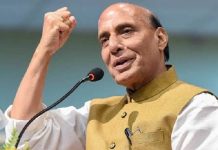Sherlock Holmes, Hercule Poirot and Miss Marple imprinted our imagination, but where is their literary heir? Aradhna Wal tracks the clues to the great Indian sleuth

THE STORY began with Enid Blyton’s defining detectives. Young Indian readers could choose their own adventure identities — intrepid like George or canny like Fatty? With adolescence, we split along the gender lines of Nancy Drew and The Hardy Boys. As mysteries graduated to murder, Agatha Christie’s characters became the lens to nascent worldviews. Is human nature the same everywhere, as Miss Marple said? Or is truth revealed through order and method, as per Poirot? Each series embodied a place and a personality so familiar, it subsumed the foreign. Sure, there are other major flags on our mystery map but none are homespun.
Local suspects have presented themselves for cross-examination. Kalpana Swaminathan released I Never Knew It Was You in mid-March, the fourth in her detective Lalli series. Malaysian-born Shamini Flint’s Inspector Singh, after touring South Asia, has arrived in India with Inspector Singh Investigates: A Curious Indian Cadaver. British writer-journalist Tarquin Hall’s Delhi-based Punjabi detective Vish Puri has solved The Case of The Deadly Butter Chicken, but Indian readers will have to wait for the resolution till July. Since 2004, when Stieg Larsson gave us a specifically Swedish Mikael Blomkvist and Lisbeth Salander, the dysfunctional duo who dealt not with individual crime but deep-rooted corruptions and bigotry, major Indian publishing houses have been hot on the trail of a detective. Not the shadowy figure in a trench coat but one entrenched in an Indian landscape.
For those who write in English, is the existing canon overwhelming? Writer Madhulika Liddle and publishing consultant Jaya Bhattacharji Rose say the burden of the tradition of detective fiction can be onerous. “At some point, readers and writers will be looking over their shoulder and comparing themselves to international names,” says Rose. Ashok Banker, one of the first Indian crime fiction novelists in English, is a bit miffed about what he considers an import. “The detective figure is a largely Western concept; a myth of supremacy featuring a white male figure, superior in strength and intellect to those around him, who will save the world or the day. A tradition inherited by the Americans from the British.” Of course, the American Edgar Allan Poe preceded Doyle and Georges Simenon’s very French Commissaire Maigret was possibly the most popular. Zac O’Yeah’s recent Once Upon a Time in Scandinavistan has the empire fighting back as Public Intelligence Officer Herman Barsk roams a futuristic Scandinavia colonised by India.
India’s own multiplicity of rich regional literary traditions have churned up plenty a popular sleuth, reaching possibly as far back as Birbal. Wily, intuitive, propelled by the self-interest of a Hindu holding a political position at a Muslim court, his tales are amusing adages accompanied by a lesson in logic. In the 1950s, Asrar Ahmad, aka Ibn-e-Safi, published a 125-book series called Jasoosi Duniya in Urdu, starring Colonel Faridi and Captain Hameed. Some of the books were adapted from English novels such as Victor Gunn’s Ironsides’ Lone Hand. However, plots and the characters were largely original. His globetrotting crime fighters took a steadily growing readership on adventures all over Europe, Africa and the US. Satyajit Ray’s Feluda first appeared in 1965 and quickly became one of the most popular detectives in Bengal and India. Based on the Holmes-ian model, he was the embodiment of the witty eloquent Bengali intellectual, who uses his ‘magajastra’ (brain-weapon) to best his foes. Pattukottai Prabhakar’s couple Bharat and Susheela have entertained Tamil readers since the ’80s with antics at their detective firm, Moonlight Agencies.
India has many regional traditions, producing fictional sleuths in Bangla, Urdu, Tamil, etc
Vernacular detective fiction is still relatively well read. The evidence is in plain sight at bookstalls in any given railway station: alongside lurid crime and detective magazines, there’s a reasonable selection of Surender Mohan Pathak, the 73-year-old Hindi pulp fiction author, Diamond and Tulsi paperbacks hearkening to a pre-TV age, and rows of lesser known titles with book jackets reminiscent of prurient James Hadley Chase covers. Still, the general consensus is that Feluda was India’s last great detective. His stories, of course, were written in Bangla, not English.
Anurag Basnet, former editor with Penguin India, is irked by constant comparisons to the West. “Readers are intelligent enough to know that when they pick up a book set in Mumbai or Delhi, the story will revolve around local people and mannerisms,” he says. He calls Penguin author Swaminathan, “one of the first Indian writers to come up with a credible detective recently”. Though comparisons between her 63-year-old Mumbai policewoman Lalli and Alexander McCall Smith’s Mma Ramotswe, of the bestselling No.1 Ladies Detective Agency are tough to dodge, Lalli’s gender and age as she trudges Mumbai streets and has run-ins with the underworld, do give her an edge. However, numbers tell a different story. Hachette publishers say that while their international detective fiction titles sell 50,000 copies in a single edition, Indian counterparts sell a tenth of that in total. If the shadowy silhouette hasn’t yet taken on a robust form, O’Yeah says it’s because this is a “necessary phase to go through before somebody takes up the challenge and creates the greatest Indian fictional detective ever.”
Other challenges are inherent. “The genre rests largely on the shoulders of the central character,” says Basnet. “Even with a tight plot, if the detective figure is not entertaining or credible enough to sustain the book and at least two sequels, then publishers will not be interested. After all, detective novels do not function as standalones.”
INDIA’S LARGER literary landscape has a part to play, though it may be that of red herring. Banker says Indian readers are largely “snobs”. When he started out in the early ’90s, he had trouble finding a publisher simply because he wrote crime fiction. “Why don’t the characters come out of their drawing rooms onto the streets? The stories to be told are all waiting there,” he says. This street-level engagement can, in fact, be substantiated. Late British author HRF Keating, who created Inspector Ghote 10 years before stepping foot in India, would have had trouble finding a publisher too. Tarquin Hall had to cross the Wagah Border from Delhi by land, because his detective Vish Puri is afraid of flying.
|
A credible detective figure must sustain the book and at least two sequels to interest publishers |
“There has been a marked growth in the genre and also an increase in the number of women writers in the past few years,” says Vaishali Mathur, Penguin’s head of commercial fiction, “FIR, by Monabi Mitra, set in the seedy crime world of Kolkata, is forthcoming.” Penguin says a first print run of 10,000 in the detective fiction genre sells out within a month. Contextualising the crime is not just the detective’s but a publisher’s business too. “How the writer works in the world around them is challenging. And a genre like detective fiction in the Indian context would mean the writer should factor in for the kind of manipulation possible in the system,” says Karthika VK, editor-in-chief and Publisher of HarperCollins India. While Holmes had the fatuous Inspector Lestrade and Poirot the able if unimaginative Superintendent Spence, Indian detectives are likely to look for loopholes around the police.
Author Jerry Pinto says, “(Detective fiction) must either be a magnificent puzzle or a literary work” but most magnificent puzzles now come assembled in the box. The advent of technology and forensic sciences that made Holmes compelling, have since eviscerated all traces of mystery. Indelible digital and biological trails to be scanned and read by precise forensic tools are in the public domain, pushing out the private eye.
A credible detective figure must sustain the book and at least two sequels to interest publishers
Other challenges are inherent. “The genre rests largely on the shoulders of the central character,” says Basnet. “Even with a tight plot, if the detective figure is not entertaining or credible enough to sustain the book and at least two sequels, then publishers will not be interested. After all, detective novels do not function as standalones.”
INDIA’S LARGER literary landscape has a part to play, though it may be that of red herring. Banker says Indian readers are largely “snobs”. When he started out in the early ’90s, he had trouble finding a publisher simply because he wrote crime fiction. “Why don’t the characters come out of their drawing rooms onto the streets? The stories to be told are all waiting there,” he says. This street-level engagement can, in fact, be substantiated. Late British author HRF Keating, who created Inspector Ghote 10 years before stepping foot in India, would have had trouble finding a publisher too. Tarquin Hall had to cross the Wagah Border from Delhi by land, because his detective Vish Puri is afraid of flying.
Says Nandita Aggarwal, publishing director, Hachette India, “That the genre is becoming popular is not statistically gaugeable but one can sense a certain interest in the market. There are more authors writing. Last year, we published five books in the series as opposed to none before. It is not a paradigm shift. But the market is exploring the genre.” Even an intuitive breakthrough requires a critical mass of data points. Clues have been examined, witnesses questioned, and the evidence sifted. Now to turn the page for a final denouement.
With inputs from Janani Ganesan
Aradhna Wal is a Sub-Editor with Tehelka.
aradhna@tehelka.com





















